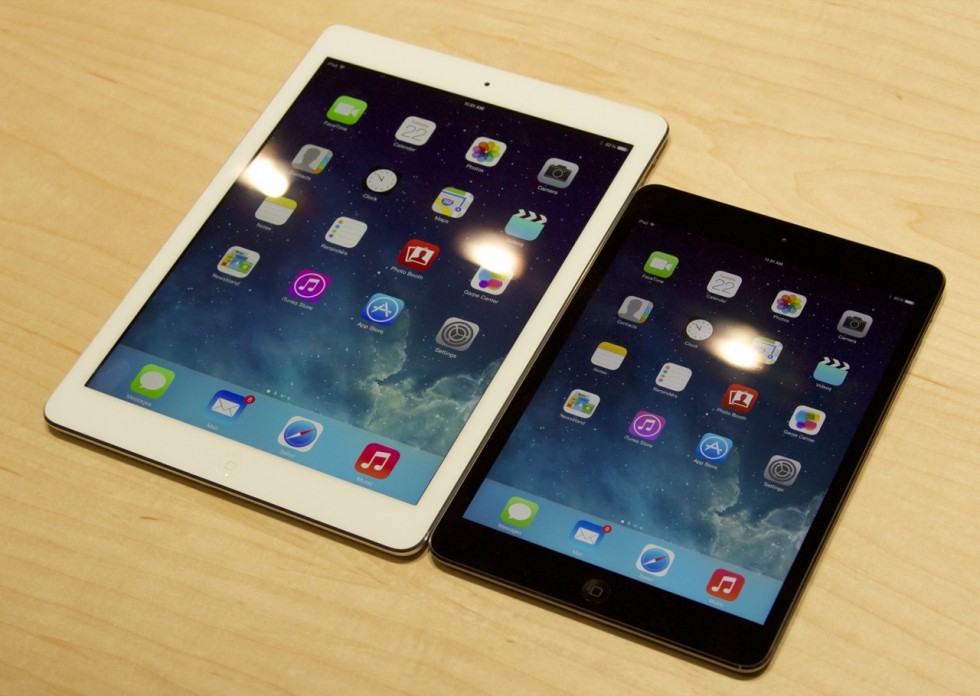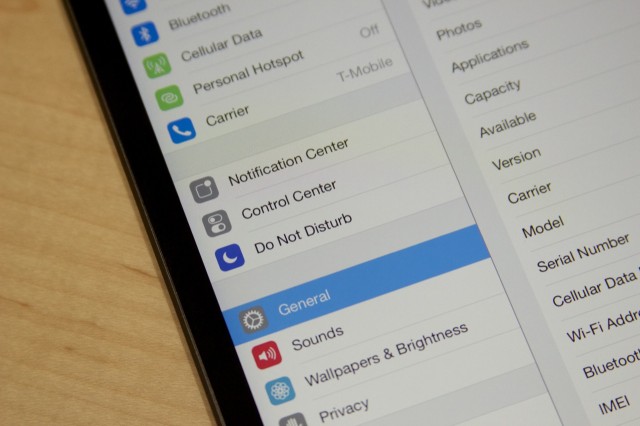
SAN FRANCISCO—Apple dropped a massive amount of hardware on the press gathered at the Yerba Buena Center for the Arts this morning, and the two biggest announcements were the new iPad Air and the refreshed Retina iPad mini.
Each tablet addresses its predecessor's greatest failing. In the case of the iPad Air (which completely replaces the standard iPad in Apple's branding, save for the still-kicking $399 iPad 2), it shaves nearly half a pound from the weight of the fourth-generation iPad and fits the same 9.7-inch Retina display into a smaller tablet thanks to the thinner display bezels. The screen looks the same, but holding the new tablet in your hands feels very different. For the last year or so I've primarily used smaller tablets, most notably both Nexus 7 models, and larger tablets like the Retina iPad and Nexus 10 were just too large to use comfortably for what I usually do when I'm on a tablet, namely reading and Web browsing.
The iPad Air doesn't completely swing things back in the other direction for me, but the reduced size and weight combined with the 4:3 screen ratio (which I still think is more sensible in a 10-inch tablet than a widescreen ratio) makes the iPad Air the most comfortable large-screened tablet I've used. One-handed usage in particular should be much easier with this tablet, even though a smaller tablet like the iPad mini or Nexus 7 will still probably serve content consumers a little better.
-
The iPad Air looks like a larger iPad mini.Andrew Cunningham
-
The Retina iPad mini really does have a gorgeous screen, but it will cost you.Andrew Cunningham
-
The "space gray" Retina iPad mini next to the "space gray" iPhone 5S.Andrew Cunningham
-
The "space gray" iPad Air next to the "space gray" iPhone 5S.Andrew Cunningham
-
The screen orientation and mute switch and the oval volume buttons.Andrew Cunningham
-
The iPad Air has the same stereo speakers on the bottom as the mini.Andrew Cunningham
-
The new iPads were running iOS 7.0.3, a tweaked build of iOS that we haven't seen before. It was rolled out to other iOS 7 devices today.Andrew Cunningham
-
Apple's Smart Covers live on at $39.Andrew Cunningham
-
Apple's new Smart Cases, which run $69 for the iPad mini and $79 for the iPad Air.Andrew Cunningham
-
The new Smart Case looks like the old one, just with a revised color palette.Andrew Cunningham
-
It has the same microfiber inside as Apple's latest iPhone cases.Andrew Cunningham
Speaking of the iPad mini, I've never been a fan of its low-resolution 1024×768 display after using Retina iPhones and iPads and the nicer screens in both Nexus 7 models. Especially with the thinner, more delicate fonts included in iOS 7, non-Retina displays are showing their age these days.
The Retina mini fixes this completely with its 2048×1536 7.9-inch display. Putting the same resolution in a smaller screen makes for an even sharper display than the iPad Air, and iOS 7's thin fonts look excellent on the new screen. It looks and feels like the same tablet as last year, though it is very slightly thicker and heavier than it was last year: it weighs 0.73 pounds instead of 0.68 and is 0.29 inches thick instead of 0.28. The difference isn't enough to make the new mini incompatible with accessories for the old one, nor is it easy to tell the difference when you're actually holding the tablet in your hands, but it is there.
This is the display we all wanted on the iPad mini a year ago, but it comes with a steep price: the 16GB model starts at $399, almost twice what comparable tablets from Google and Amazon cost. Of course, Apple chases the luxury market—there's no problem with that. But any comparison between the Retina iPad mini and the 2013 Nexus 7 or Kindle Fire HDX (and there will be comparisons) will be overshadowed by that rather large caveat.

The second downside of the old iPad mini (which, for the record, is still sticking around at $299) is its performance—Apple's A5 isn't bad, but it's coming up on its third birthday, and its CPU and GPU can't hold a candle to any of the A6 or A7 families. The new iPad mini gets the exact same A7 chip as the larger iPad, meaning both tablets should perform identically.
One quick note on performance: the A7 in the iPhone 5S shares its name with the A7 in both iPads, but we may not be looking at exactly the same chip here. The A7 in the iPhone promises (and delivers, roughly) twice the CPU and GPU performance of the A6, while the A7 in the iPads promises twice the CPU and GPU performance of the more powerful A6X. Whether we're looking at a faster-clocked version of the same SoC or an A6X-like chip with more GPU hardware and a wider memory interface isn't clear, but we'll be digging into this more aggressively when we get review hardware in-hand.
The iPad Air launches on November 1 and will cost $499 for 16GB. The Retina iPad mini launches on some unspecified date later in November and will cost $399 for 16GB.
Listing image by Andrew Cunningham
reader comments
107